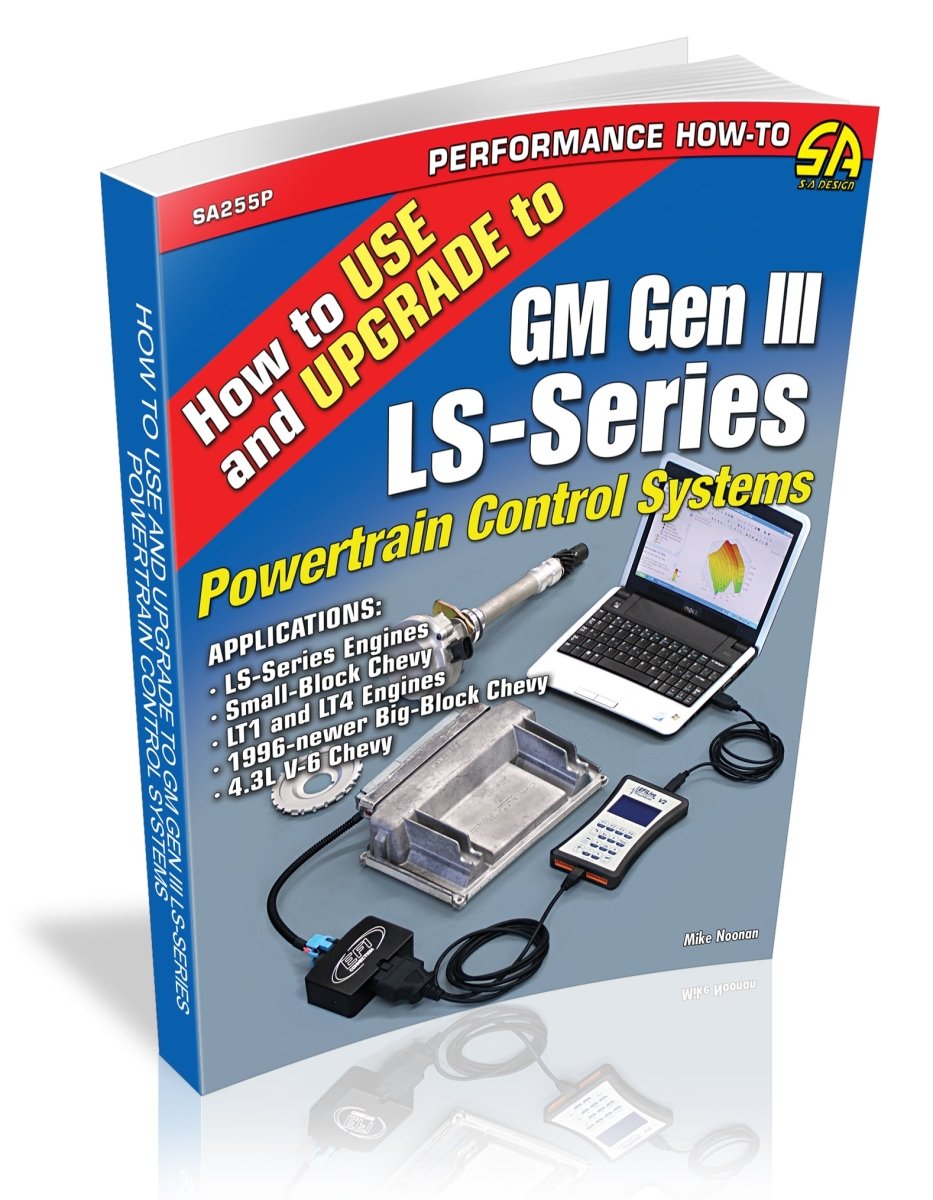Without a doubt, GM's LS Series engines are the hottest thing going right now. Thousands of enthusiasts are either modifying their cars factory equipped with these engines, supported by a robust aftermarket, or converting their vintage muscle cars to run with these efficient and powerful engines. Of course, with technology comes complexity. To get the maximum performance and efficiency out of any modern engine, you have to have a solid understanding of the technology involved and how to make the most of it.
In How to Use and Upgrade to GM Gen III LS-Series Powertrain Control Systems, the benefits, advantages and nuances of this robust and efficient control system are thoroughly examined. Do you have a vehicle already equipped with an LS Series engine but want to do a transmission swap? Do you want to convert from a cable throttle to an electronic throttle, and make systems like cruise control integrate? Do you want to eliminate the dreaded Optispark distributor from your LT1/LT4? Perhaps convert your Gen I small-block to distributor-less ignition? Or convert to universal OBD-II diagnostics? Do you want an affordable control system to run fuel injection, ignition timing, cooling fans, air conditioning, and electronic overdrive transmissions while swapping all if this into your classic muscle car?
How to Use and Upgrade to GM Gen III LS-Series Powertrain Control Systems will cover all of these applications and more. Not only are the performance and flexibility aspects covered in great detail, but there are significant cost benefits as well. Implementing a GM Series III PCM based control system will not only afford you great flexibility and tune-ability, but it can be accomplished significantly cheaper than most aftermarket alternatives. If you are planning any of these complex swaps or just looking to thoroughly understand the nuances of modern GM control systems, this book is a vital addition to your technical library.
Acknowledgments
About the Author
Introduction
Chapter 1:
Understanding the Small-Block Generations
Generation I, with Multi-Port Fuel Injection
Generation II, 1992–1997 LT1 and 1996–1997 LT4
Generation III, 1997–2007 LS Series
Generation IV, LS Series
Chapter 2:
Comparing Gen III Controllers
Tuned Port Injection ECMs
Generation III Powertrain Control Modules
Throttle Actuator Control Modules
Chapter 3:
Crankshaft and Camshaft Signals and Ignition Systems
High-Resolution Crankshaft Signal
Low-Resolution Crankshaft Signal
Chapter 4:
Tuning Software and Equipment
GM Tuning
Custom Tuning and Data Acquisition
Handheld Tuners
Tuning Equipment
Chapter 5:
Sensors and Inputs
Throttle Position Sensor
Idle Air Control Valve
Engine Coolant Temperature Sensor
Air Temperature Sensor
Mass Airflow Sensor
Manifold Absolute Pressure Sensor
Knock Sensor
Oxygen Sensor
Oil Pressure Sensor
Vehicle Speed Sensor
Camshaft Position Sensor
Crankshaft Position Sensor
Accelerator Pedal Position Sensor
Park/Neutral Indicator
Gear Select Switch
Brake Switch
Clutch Pedal Position Switch
Fuel Enable Control
Chapter 6:
PCM Signal Outputs
Engine Control Output
Fuel Pump Relay Control
Malfunction Indicator Lamp Control
Tachometer Output
Vehicle Speed Output
Electric Fan Control
Air Conditioning Control
Generator Control
Emissions Control
Skip Shift Solenoid Control
Reverse-Inhibit Solenoid Control
Transmission Control
Serial Data Output
Chapter 7:
Changing the Firing Order
Injectors and Ignition Coils
Modifying Calibration
Chapter 8:
Electronic Throttle Equipment
1997–2004 Corvette
2004–2005 Cadillac CTS-V
GM Truck
EFI Connection 24x Throttle Body Assemblies
Chapter 9: Electric Fan Operation
Air Conditioning Considerations
PCM Calibration
Camaro, Firebird and Corvette
Trucks
PCM Operation
Chapter 10:
Transmission
Automatic Transmissions
Manual Transmissions
Chapter 11:
Air Conditioning
Base Calibration
Operation Overview
PCM Conversion Recommendations
Chapter 12:
Cruise Control
Cable Throttle Systems
Electronic Throttle Systems
Chapter 13:
Wire Harness Selection
Used Wire Harnesses
New Wire Harnesses
Chapter 14:
On-Board Diagnostics and Troubleshooting
Assembly Line Diagnostic Link
OBD-I System
OBD-1.5 System
OBD-II System
Troubleshooting Diagnostic Trouble Codes
Chapter 15:
Gen III LS PCM Conversions
Project 1: 24x Small-Block Chevy in a 1933 Willys
Project 2: Twin-Turbo Small-Block Chevy in a 1998 GMC Truck
Project 3: Turbo 4.3L V-6 3x Conversion
Project 4: 24x LT1 Conversion to Eliminate Optispark in an F-Body
Project 5: Big-Block Ram Jet 502 24x Conversion
Glossary
Source Guide





